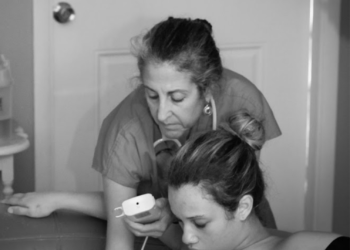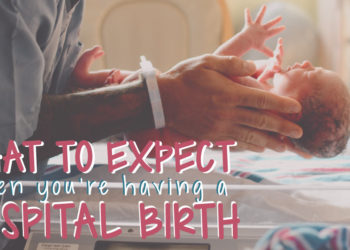As expectant parents navigate the many decisions and choices surrounding childbirth, one thing that stands out is cost. Home birth costs are typically not something that people look into until they are considering going the route of a home birth.The financial impact of having a baby can be significant, and parents need to consider how much they can afford to spend on where their baby will be born.
One option that more and more people are considering is having a home birth instead of going to the hospital. While this idea isn’t new, its growing popularity shows that families today look at childbirth differently. Home births can offer a unique experience that is often more intimate and personal than being in a hospital.
But choosing this alternative means understanding how much it will cost. Knowing the expenses associated with home births and how they compare to hospital births can make a big difference when deciding. This knowledge gives soon-to-be parents the power to plan their baby’s arrival confidently.
In this article, we’ll take an in-depth look at the costs of home births. We’ll break down all the factors that contribute to these expenses, compare them to what you might expect with a hospital birth, and share information on insurance coverage and available financial help. Whether you’re thinking about having a home birth or just exploring your options, our goal is to give you all the details you need to make the best choice for you and your family.
The Cost Factor: Home Birth Expenses
When evaluating the home birth cost, it’s essential to break down the expenses into their components. Each aspect plays a critical role in shaping the overall financial commitment.
Primary Expenses:
- Midwife Fees: Typically, these fees cover the full spectrum of care, from prenatal visits to birth and postnatal check-ups. Midwives may charge flat rates ranging from $3,000 to $9,000.
- Prenatal and Postnatal Care: Ongoing checks during pregnancy and after birth ensure the health of the mother and baby. These are usually included in midwife fees but can be separate in some cases.
- Medical Supplies: A home birth kit, including sterile gloves, umbilical clamps, and gauze pads, can cost between $50 and $90.
Additional Services:
- Birthing Pools: For those opting for water births, renting or purchasing a pool adds to costs.
- Doula Services: While not essential, a doula provides valuable support. Rates vary widely, but expect hourly rates between $25 and $65 or more for comprehensive services.
- Alternative Therapies: Acupuncture or massage to ease labor pains or enhance relaxation could also factor into expenses.
Geographical Variation: Costs fluctuate depending on where you live. Urban areas with higher living costs typically have higher fees for midwifery and other services than rural locations.
Personal Preferences: Additional therapies or customized care packages can also influence the final bill. It’s advisable to discuss individual preferences with care providers early on to anticipate any extra charges.
By understanding these variables, expectant parents can better prepare for the financial requirements of a home birth. Comparing these costs against hospital births will further clarify the financial picture.
Home Births vs. Hospital Births: A Comprehensive Comparison of Costs
Expectant parents need to consider the financial aspects when deciding between a home birth and a hospital birth. The direct expenses associated with each option are an important factor.
Costs of Home Births
For home births, this includes costs such as:
- Midwife fees
- Prenatal and postnatal care
- Medical supplies
- Potential additional services
Costs of Hospital Births
Hospital births often involve expenses such as:
- Doctor’s fees
- Hospital stay charges
- Labor and delivery fees
- Epidural or other pain management costs
- If necessary, surgical bills from a C-section
Overall Cost Comparison
However, numerous studies show that home births can be more cost-effective overall:
- According to Truven Health Analytics, the average charge for uncomplicated vaginal childbirth at a hospital was $30,000 for an uninsured patient in 2013.
- The median price of professional midwife services for home birth—ranging from $3,000 to $9,000—is significantly lower.
Therefore, while it’s not advisable to make a decision based solely on costs due to various factors and potential risks involved, it’s clear that home births can provide significant financial savings in the right circumstances.

Insurance Coverage for Home Births
Expectant parents considering a home birth often encounter challenges when seeking insurance coverage. The variability in how insurance plans categorize home birth costs and services can result in outright denials or partial coverage. Patients should be proactive, seeking clarity and assistance to secure coverage for their planned home birth. Not all midwife practices accept insurance, but other financial assistance options exist to offset home birth costs. However, depending on your insurance plan, it may be cheaper overall to receive prenatal care and have a home birth with a midwife.
Financial Assistance Options
Expectant parents considering a home birth often seek ways to manage the home birth cost-effectively. For those looking for financial assistance, various resources can provide aid or reimbursement:
Government Programs
Some government initiatives may offer support for maternity care services. Eligibility and extent of coverage vary, so it’s advisable to research state-specific programs.
Nonprofit Organizations
Numerous organizations are dedicated to assisting families with birthing expenses. They might offer grants or aid based on need, health status, or demographic criteria.
Crowdfunding Platforms
Personal fundraising through platforms like GoFundMe has become a popular method to cover medical expenses, including costs associated with home births.
Each option requires a thorough investigation into application processes and qualification requirements. It is also beneficial to consult with healthcare providers who may have additional insights into local and national financial assistance programs tailored specifically for maternity care.
Is a Home Birth Affordable for You?
Determining the affordability of a home birth requires a personalized financial assessment. Begin by crafting a detailed budget for all expected expenses, including midwife fees, medical supplies, and any additional support you may desire, such as doula services. Here are some steps to consider:
- List all potential home birth costs: Gather information on midwife rates in your area and include items such as birthing kits and other supplies.
- Explore payment options: Many midwives offer payment plans to spread the cost over time. Some also provide discounts for upfront payments or sliding scale fees based on income.
- Assess the value of doula services: While doulas add to the upfront cost, their support can be invaluable for managing labor and could potentially reduce the need for expensive interventions or transfers to hospital care.
Evaluating these aspects lets you decide whether a home birth aligns with your financial situation.
The Value of Safety: Balancing Cost Considerations with Risk Factors
When considering whether home births are affordable, it’s important to consider both the cost and their safety. Home births may be cheaper and more comfortable, but there are risks involved, too.
Here are some of the potential dangers of home births:
- Fewer options for pain relief: If you give birth at home, you won’t have as many choices for managing your pain during labor, such as epidurals that are readily available in hospitals.
- More likely to need hospital transport: If something goes wrong during a home birth and you need to go to the hospital right away, there could be extra risks involved in getting there. Research has found that there’s a 23-37% chance of needing hospital transport for first-time pregnancies.
These risks show why it’s so important to carefully think about whether a home birth is right for you. To have a safe home birth, certain conditions usually need to be met, such as not having any ongoing medical issues or pregnancy complications and having a certified/licensed doctor or midwife present.
A crucial part of this decision-making process is talking to your midwife or healthcare provider about what would happen if something did go wrong. You should discuss what supplies you would need for a home birth, how emergencies would be handled, and when it might be necessary to transfer to the hospital.
It’s important to remember that considering safety factors isn’t meant to discourage you from choosing a home birth—it’s simply about being well-informed. While saving money can be a big advantage of giving birth at home, it shouldn’t come at the expense of your safety.
Home Birth Cost Overview
The journey of bringing a new life into the world is profound and personal, with each family’s path uniquely shaped by their values, circumstances, and aspirations. When considering the cost of home birth, it becomes apparent that affordability extends beyond the initial price tag—it encompasses the long-term value of a cherished birthing experience.
- Assessing Affordability: Weighing the expenses of home birth against hospital birth requires a holistic view of your financial landscape. Considering the upfront costs and potential savings from fewer medical interventions and personalized care is essential.
- Seeking Guidance: Collaborating with seasoned midwives or healthcare professionals can clarify the expenses associated with home births. Their insight is invaluable in understanding insurance nuances and exploring resources tailored to your needs.
Remember, while the financial aspect is critical, it should harmoniously coexist with ensuring a safe delivery for both mother and child. By meticulously analyzing your financial readiness and consulting with experts, you can make an empowered decision that aligns with your health, budget, and vision for childbirth.
For those contemplating this intimate alternative to hospital births, embracing the full spectrum of considerations—costs, safety, and personal preferences—will lead to an informed choice that reflects the best interests of your growing family.

















